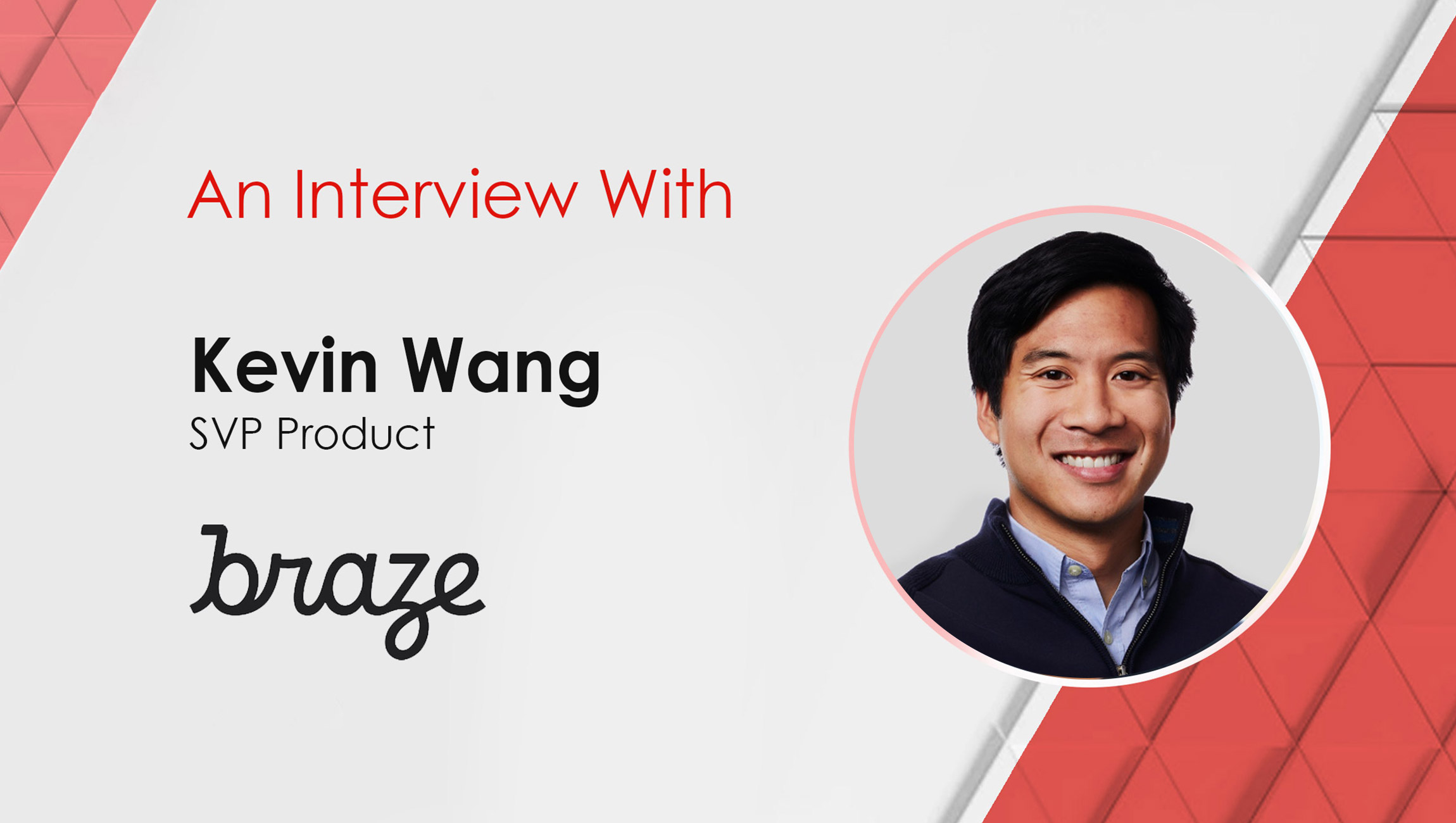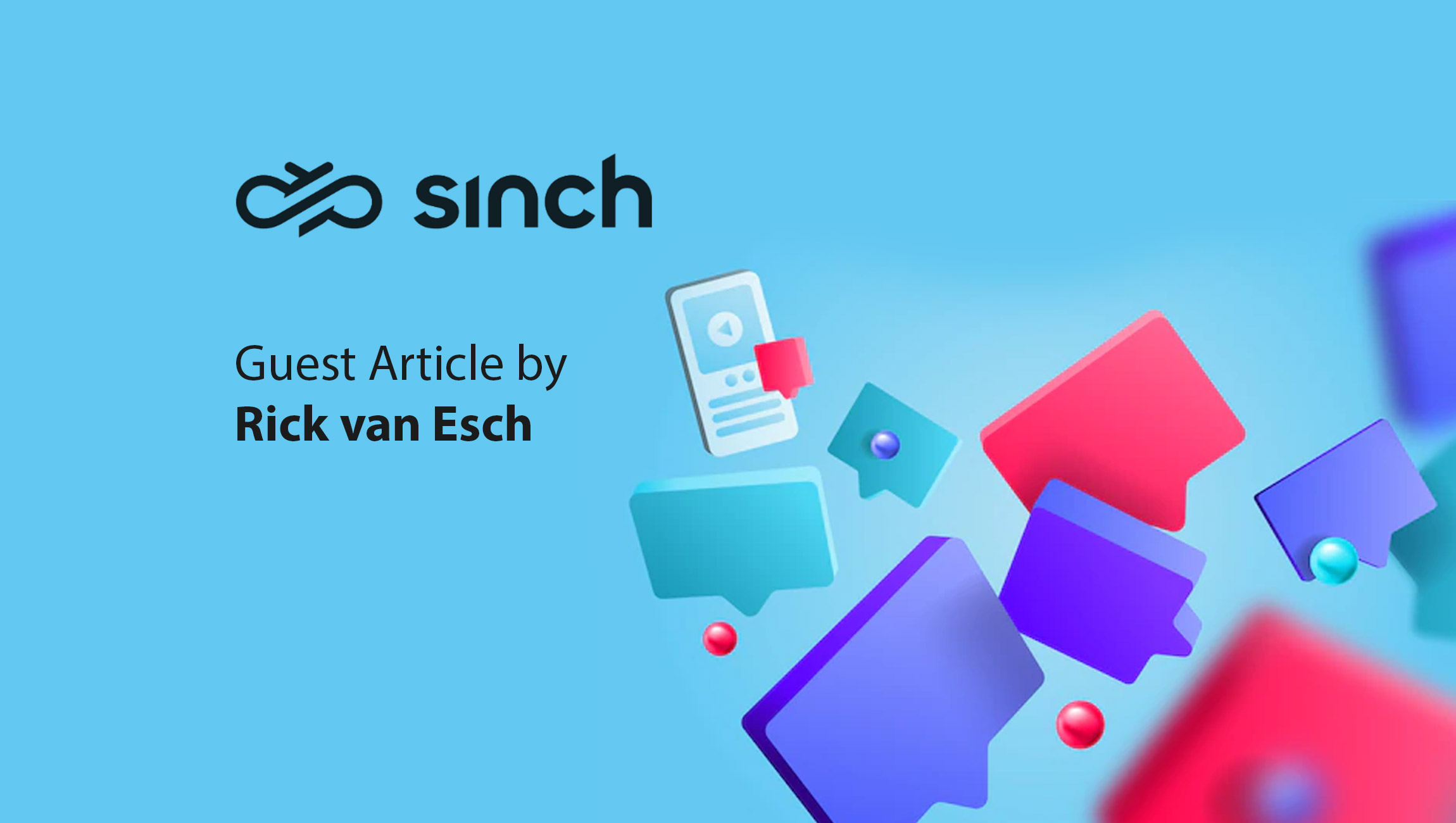Kevin Wang, SVP of Product at Braze talks about some of Braze’s new features that enable marketing goals in this short brand Q&A:
_______
Welcome to this MarTech Series chat, Kevin, tell us more about your time at Braze and how product management has been for you here?
My time at Braze has all been centered around designing and building our product. I started at Braze as an engineer and helped to build our earliest products that found product/market fit. After a few years in engineering management (and running tech recruiting), I switched to the Product team and built out our Product Management and Product Design functions.
I’m proud to say that our product vision has largely remained the same since the beginning – to create a flexible platform designed to help brands build brilliant customer experiences. Over the years, the needs of our customers have grown and evolved and our product lines have done the same — we’ve launched products such as SMS, Currents, and most recently upgraded our Canvas Flow product to help brands more seamlessly build effective customer experiences. It’s been exciting to both have a north star that we’re aiming towards, as well as a ton of flexibility and exciting challenges scaling up the organization as we build towards the future.
We’d love to hear more about Braze’s new journey orchestration tool: how does this enable end-user needs?
Brands need to develop increasingly more intricate, timely, and effective campaigns to stay on top of changing consumer internet behavior. Braze’s recently released journey orchestration tool, Canvas Flow, empowers marketers to easily create complex consumer experiences across their channel mix faster than ever before with no code required. The new offering aims to empower marketers in crafting more creative customer journeys in our digital-first world where consumers increasingly demand a seamless, personalized experience.
A few significant ways that Canvas Flow is helping meet end-user needs is by enabling:
1. The launch of more creative campaigns, faster: On a single platform, brands can plan campaigns, compose messages, and conduct multivariate tests with little to no assistance from a technical team. The unified interface cuts down on the time marketers spend “context switching,” or hopping between various siloed engagement platforms.
2. Real-time adaption to exceed customer expectations: Based on contextual preferences, behaviors, and cross-channel interactions, brands may dynamically adapt customers’ experiences in real-time. At any stage of the customer journey, brands can now quickly incorporate triggered event or API metadata into messages, facilitating more efficient message personalization.
3. Journey optimization: Brands can better leverage their data so they can continuously test, refine, and improve each step of the customer journey – automatically. With this feature’s extensive testing options, marketers can test channels, cadence, frequency, subject lines, message copy, message design, and more from a single, integrated solution.
Designing, visualizing, and launching—the three main aspects of building a seamless customer journey—are all available in a single platform with Canvas Flow, allowing for a faster transition from the idea stage to launch.
Marketing Technology News: MarTech Interview with Ivan Ostojic, Chief Business Officer at Infobip
When it comes to building out relevant engagement strategies in today’s ecosystem, what do you feel marketing teams fall behind on?
Today’s marketers have access to more information than ever before on the preferences, activities, and reactions of their customers. However, simply having access to that data does not equate to having an effective window into what it actually means or the capacity to act effectively based on pertinent insights.
Many marketers are failing to make the essential shift to focus on customer retention. Far too many businesses focus most of their attention, resources, and efforts on the first stage (acquisition), neglecting the second (engagement and retention). Acquiring new customers is expensive; it is much more effective to retain the ones you already have and encourage them to continue purchasing. After all, companies succeed not by spending ever-increasing amounts of money on advertising to reach and attract customers, but by acquiring the right audiences, understanding those users, meeting their needs, and providing the customer experiences that keep them engaged over time.
Marketers frequently neglect looking inward and paying close attention to the behavior of their present customers to inform how to interact and connect with them most effectively. In this scenario, it is not unexpected to observe customers flocking to competing brands that can offer that deep understanding that many of today’s consumers look for. On the contrary, brands that do incorporate lessons learned from existing customers’ behavior into their engagement approach will see success in securing customer loyalty.
Furthermore, marketers often use acquisition strategies to make up for customer churn. Retention efforts don’t have to be a reactive process, yet many marketers treat it like it is. Instead of this never-ending cycle, marketers should look for ways to decrease churn altogether. Brands that recognize the value of ongoing retention initiatives will prevail and be rewarded with loyal customers.
How can intuitive platforms help alleviate most of the common problems you see in B2B marketing?
Intuitive platforms like Canvas Flow help alleviate attention-grabbing and persuasion (both overt and covert) marketing. By creating a framework of data collection, user profiles, and segmentation that leverages that data to provide valuable, intuitive, targeted, and personalized experiences to consumers, marketers can meet their own goals while also aligning with the goals and interests of each customer.
Additionally, these platforms help evolve a common B2B marketing problem such as transactional interactions into ones that have a human connection – something that is fundamental to a successful customer engagement strategy. The more human your interactions with your customers feel to them, the more successful those interactions will be. With easy-to-navigate, intuitive platforms, marketers are given the ability to deliver personalized messages on any channel at the right moment, with the desired cadence that resonates best with each unique customer.
Marketing Technology News: How Brands Can Turn To Community Sports Sponsorships To Meet Corporate Social Responsibility And Improve Consumer Trust
A few best practices that you feel B2B product teams need to follow to optimize how they build/enhance their offering?
There’s a growing body of content out there on best practices for product teams, so I’ll focus on a few ideas that I think are really applicable for B2B.
First, I’m a big believer in durable teams that stick together for the long term. In B2B, the products tend to be broad and complex, and it’s important that teams stick together long enough that they can develop deep expertise (ex: customer experts, tech experts, industry experts). You don’t want mercenaries hopping around to different product areas, never deeply understanding their part of the business or technology.
Additionally, it’s critical to know how far into the future to aim when building your product. For our customer engagement market, our customer base moves really fast. You need to always be building towards the horizon since there are constantly new opportunities with technology, regulatory, or consumer expectation shifts. That wouldn’t work for every industry — in some cases, you have product areas that remain static for long periods of time because there isn’t the same constant push for novelty as you see in customer engagement.
Lastly, it’s critical to understand where your customers find the unique value-add in your platform (ex: what are they coming to you for?). For Braze, our customers benefit from our comprehensive combination of customer-centric communication channels, real-time data orchestration, and automation capabilities. One of the best ways to be successful with Braze is by using all of these functions, and that informs our roadmap.
Some last thoughts, on the future of B2C marketing and martech?
Brands want to be able to deliver the most innovative customer experiences – they don’t want to envision what could be an incredible customer experience, and then not be able to accomplish it. To that end, Braze has invested in our Canvas Flow product as a no code and low code environment – adding more expressive power so that more customer engagement use-cases are possible. Customers are becoming savvier about what they expect from brands, and it requires hard work and sophistication to deliver really robust experiences. Canvas Flow is bridging that gap between what brands know is possible, and what they can realistically achieve, helping them to reach their goals when it comes to orchestrating sophisticated campaigns.

Braze is a leading comprehensive customer engagement platform that powers interactions between consumers and brands they love.
Kevin Wang is the SVP of Product at Braze.
Missed The Latest Episode of The SalesStar Podcast? Have a quick listen here!
Episode 136: Driving Sales Revenue Despite Recessionary Times with AJ Bruno, Founder and CEO at QuotaPath
Episode 135: B2B Growth Hacks and Best Practices with Andy Champion, VP and General Manager of EMEA at Highspot
Episode 134: Driving Marketing ROI- Tips and Best Practices with Mariana Cogan, CMO at People.ai











